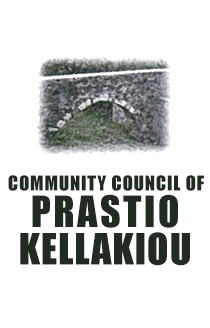Lent period
The lent period begins on the Sunday of the Prodian Son and continues until the Sunday of Tyrofagos (last day of Carnival).
Usually during this period a lot of people masqueraded and went to friendly houses where they amused the owner.
On clean Monday (or Shrove Monday), the inhabitants overflowed the fields where they celebrated the day, eating Lenten food.
Customs of Easter
The days before Easter all the houses were cleaned and the housewives cooked the traditional rusks (arkatena) and the famous “flaounes” (pastry with cheese and raisins). On Holy Thursday they painted some eggs, usually red, which they would clink after the Resurrection Ceremony.
Palm Sunday
On Palm Sunday, women took leaves from olive trees to the church. The leaves would remain in the church until Pentecost when they would hallowed and taken back home for the traditional “kapnisma” (literally smoking). Specifically, the leaves from the olive tree were put in the “kapnistiri” (earthen-plated vessel) with cinder and used for the “kapnisma” of the houses and of people. This practice is considered as apostrophic for the evil spirits and it survives to this day.
On Holy Thursday, the holy icons of the church are covered with a black veil indicating the bereavement of the faithful. The same night, a replica of the holly cross with Christ on is set. On the right of the cross there is a replica of Apostle John and on the left another repolica of Virgin Mary.
All the inhabitants of the village go to church and genuflect before the holy cross and attend to the service of the 12 gospels concerning the Passion of the Christ, his Crucifixion and his Death.
On holy Friday the faithful decorates the epitaph. Young women chant the dirge (lamentation), while three myrrh-bearing women strew the epitaph with myrrh, aromas and flowers. During the night the procession of the epitaph takes place in the central roads of the village. During the procession, the women of the village strew the epitaph with the “mereha”.
During the morning service of Holy Saturday, when the priest says “Anasta o Kirios” (Arise, O God), the faithful slam the church’s stools and the black veils, which cover the holy icons fall.
Around 11pm the bells toll merrily in order to invite the Christians to the happiest service of the Christian church.
Outside of the church there is a big fire called “Lampratzia” (eastern bonfire). At midnight the priest says “defte lavete fos ek tou anesperou fotos” (come forward and receive light from the eternal light) and comes out of the church with the lay clerks for the Procession. People light their candles from the holy light and they all go in the yard of the church for the Resurrection Ceremony.
After the service, people return to their homes with their candles and keep the holy light for 40 days. They eat the traditional soup “avgolemoni” (made with eggs, lemon and rice) or trachana, flaounes.
On Sunday after the service, people make the traditional lamb on charcoals and they celebrate the day. In the afternoon, the Community Council organizes some events (including traditional games) in the village’s plaza. The events continues until Easter Monday and Tuesday. |
